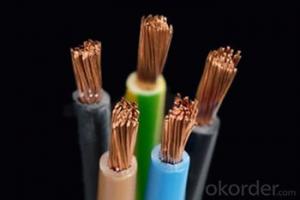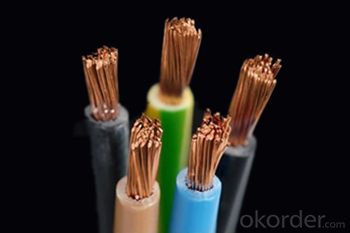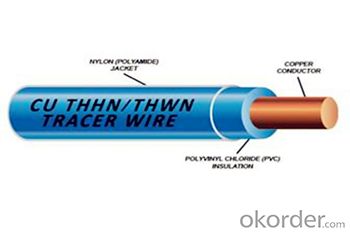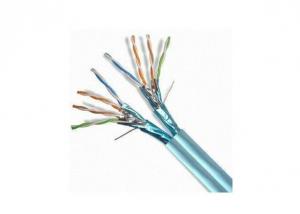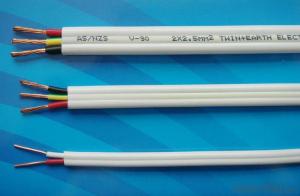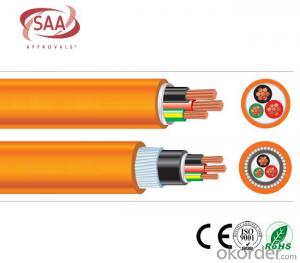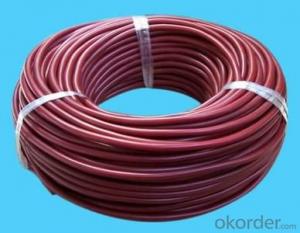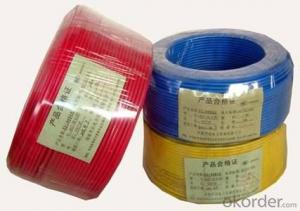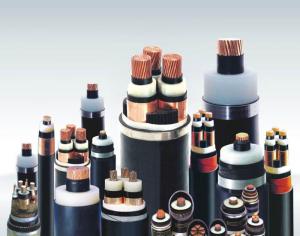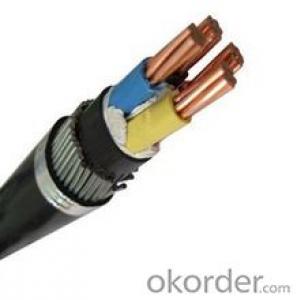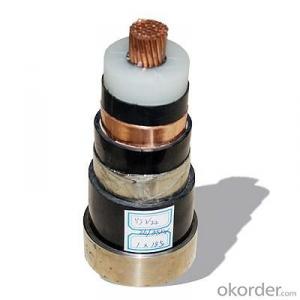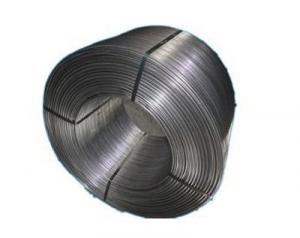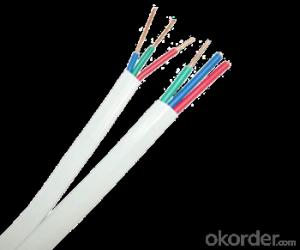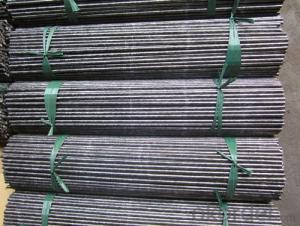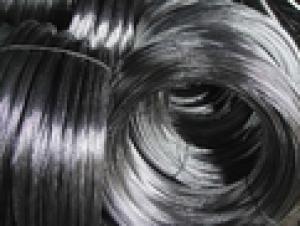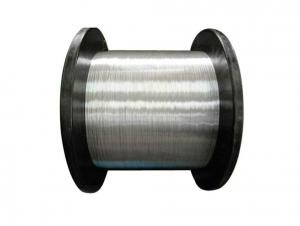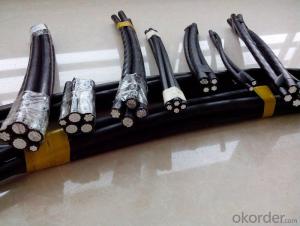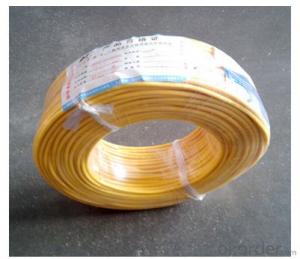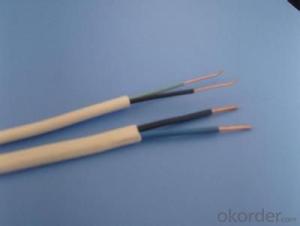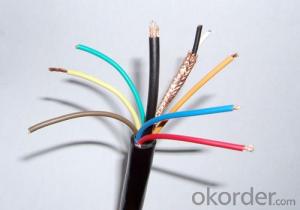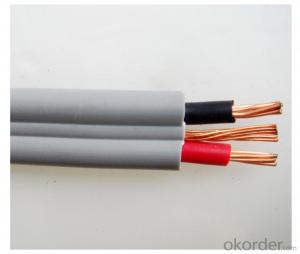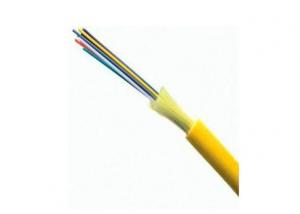High quality Nylon Jacketed Wire with a good price
- Loading Port:
- Qingdao
- Payment Terms:
- TT OR LC
- Min Order Qty:
- 10000 m
- Supply Capability:
- 100000 m/month
OKorder Service Pledge
OKorder Financial Service
You Might Also Like
Nylon Jacketed Wire
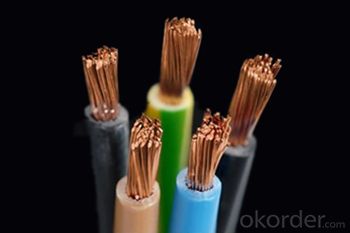
Introduction
PVC insulated nylon sheathed wire mainly applied to rated voltage of 450/750V.
Application
Under the condition of flame-retardant or non-flame-retardant, the wire shall be used in buildings, computerized devices and household appliances.
Features
In the premise of meeting the requirements of electric insulating performance, in order to possess several advantages, such as high mechanical strength, excellent lubricant and oil-proof properties, long service span, the products already have been minimized the size of shape, lightened weight. The service span is three times of common cloth wire.
Introduction of our company
Our company is a professional China Wire and Cable Manufacturers, mainly supply Aerial bundled cable,House Electric Wire, Insulated Overhead Cable,Aluminium Conductor Steel Reinforced, PVC Control Cables,XLPE Power Cables,BV Electric Wires,Nylon Sheathed Cable,Buried Cable,High Voltage Cable,House Electric Wire,Single Core Flexible Copper Cable,Civil Wire And Cable etc. series of wire and cable products, sincerely welcome everyone to visit.
- Q: I bought a mobile home and some of the wire's in the wall need to be replace but I don't know what gauge to buy.
- please use 12 gauge wire with a ground 12/2 w/.gnd all new homes being built today are to code with 12 gauge w/gnd 12ga. is safer than the use of 14 gauge please check with the commercial desk at one of the hardware giants to get the
- Q: I live in a home that is 50 plus years old. All of the electrical outlets in the home are the out dated 2 prong plug ins. Are there any safety issues associate with replacing the outdated 2 prong outlet with a 3 prong outlet to power a metal halide high bay light fixture with a 400 watt ballast? The wiring in the wall is also outdated and does NOT have the up to date 3 wire electrical supply.
- The ground is for safety in case of a condition where the case of the fixture may be energized. If the fixture is beyond reach from the ground, the lack of the ground wire is a non issue. Unplug the fixture and let it cool before touching it. As to the lack of a ground in the connection box, mark that receptacle with a permanent label that it has no ground. Harvest the plants when fully mature.
- Q: I'm 16 now, but 5 years ago I started doing electrical work at home without anyone's supervision. I changed a few outlets and switches with new ones, and wired some new outlets in the basement where there weren't any. I did this while my parents went out bowling for the evening. If your son did that, how would you feel about that? I wired everything according to code, and turned off the right breaker while working on things.
- I don't think most 11-year-olds would be able to do this safely. Where did you learn how to do these things by that young age? How did your parents not notice your work?
- Q: I have an electrical switch that was faulty so I'm in the process of replacing it. I have a garage door opener that is plugged into an outlet on the garage ceiling that needs power all the time and a light that needs to be on a switch, on the same circuit. This doesn't seem possible to me but it's how it was wired previously. Unfortunately, I've already tossed the old switch thinking, “Oh, I'll just figure it out”. I have a tan wire, a white wire, and a black wire available I also have a 2-way and 3-way switch available.
- Don't know where you live (country) but in N.A. the white will be common and the tan(sometimes red) and black are power the white will go to both the light and the receptacle-whatever color (tan or black) is in the receptacle will be constant power-and the other should come from the switch to the light
- Q: I have a wire heating up and wanting to burn that is going to the alternator (stator) . It is a black wire with a diode on it I think. I went to the john deere dealer and they first gave me a stator because they said that might be problem. It wasnt because i put new stator on and still same result. I took stator back.they checked old one and said it was good.rigged up some diode to put on it. I tried that and still wire wanting to burn up. I think maybe they give wrong diode? I have it figured out it can be only 2 things as all other wires have no shorts and this wire running from the stator is black, connects to a 4 prong plastic connector where it changes to red and goes to the solenoid, Is this wire suppose to be a hot wire where it connects to the plastic connector? I have photos of exactly what I am talking about if someone can help me I can send them the photos. It is in great detail taken with digital camera.
- The Diode helps present day to pass in one course in simple terms. in the experience that your twine that the diode is connected too is burning up you have a bad diode. there is no longer sufficient present day to truly soften it down via fact the Milli-amps are so contrite that it takes likes 0.2 to furnish a trickle value to the battery. i could use an OHM Metere to examine this out to be greater gentle with your consequences and diagnosis. an on the spot short from the 12v resource could genuinely warmth it up and burn it out. i've got in no way see any twine soften in my history of doing mowers as a effect from a bad diode. there's a risk of a incorrect connection or a bad swap permitting present day to shuttle from one prong and that's uncommon, yet conceivable.
- Q: Thank you for the good people, can help answer, my points are less, it is embarrassed! More
- Fibers are mainly used for FTTB, FTTH to solve the problem of insufficient core, is a light splitter plus a few discs melt fiber tray, usually hanging in the district staircase on the wall or stand in the green belt. Integrated wiring box and integrated patch panels are placed in the engine room, used to connect indoor and outdoor cable and jump fiber. The terminal box is a box for cable and pigtail connections. The transfer box is used for the machine room out of the trunk cable and the user's wiring cable jumping equipment. General fiber optic cable to connect these devices in the order: integrated wiring box - transfer box - split fiber box - terminal box. Originally wanted to give you insert pictures, what did not find.
- Q: Hi everyone.We moved in a new house (not an appartment). The basement is finished. I am not usually be down there yet, so I can say it is not in use. I turned the separately partial heater down to 50 F degrees. The basement has some problem, the electric down there seems not steady. When I turn the neon lights on, it keeps blinking for the first 30 seconds. When I touch the switchers, it shocks me a little bit.For addition, my house is like 1600 square feet, 2 bed rooms, 1.5 baths. I keep the central air heater (pretty new, 2009) at 78 F degrees, and the electric bill first month came at $288 saying I used 2606 kWh for 20 days. I doubt that my basement's electrical wiring set-up is broken somewhere, so the electric leaks or wastes somehow.Questions are: Is it the first bill $288 for my house size weird? How do I test if my electrical wire set-up is not wasting my money?Thanks everyone.
- Do you have any electric heaters? The electricity is not leaking. If you have an electical leak, it is not the same as a water leak. An electrical leak will not increase your electicial bill noticeably. It will trip a breaker, blow a fuse, or cause a fire. You keep the basement at 50 degrees. this is likely the reason your neon (fluorescent lights) flicker before coming on. Fluorescent bulbs often will flicker or glow when the are cold and/or damp. If your house is noew the electrical boxes should be proerly grounded. As for the electrical shocks, they could be static electricity discharging to the grounded electrical boxes. If you are not sure, hire a reputable qualified electrician to check this out. If your house is new; keep any bills and present them to the builder only if there a fault was found in the wiring.
- Q: I heard someone at an energy conference refer to a study that showed that going to a one size thicker wire in a home -- I am assuming on the American wire gauge, AWG, system -- will lead to a significant drop in home electrical energy usage. I write significant because the percentage was so big I can't remember it exactly.
- Theoretically yes by increasing the wire gauge there will be lower I?r losses (Watts) as the resistance r is lower in wire of greater diameter. HOWEVER, the resistance value of copper wires of just a couple of gauges difference is so small as to not contribute to any difference in the meter reading/monthly bill. Considering that an 8 gauge wire has a resistance of 8 ohms per mile and a 12 gauge wire's resistance is 3 ohms per mile, the difference being 5 ohms per mile. Say you had 1 mile of wire in your house (which is impossible) with 10A running constantly. The wire heating loss would be 10? x 5 500W or 0.5kW. To have this for 1 hour would consume 0.5kWhrs, at say 10 cents/h 5 cents. Now, there would be not more than 100 feet loop length on a branch circuit so the cost would be 100/5280 x 5cents 0.01cts/h. Conclusion: Your energy conference leader is talking RUBBISH.
- Q: I have a Pioneer DEH-P6600 CD player. I want to connect a rockford detonator 220 W, 4ch (Model# AMP326) to it. The sub is a single 10 inch MA audio. I would also like to make sure I know how to do it so if you could run me through that as well that would be great. I also want to know if electrical wire is safe. Please help as soon as you can. It would be nice to know by the holidays! Thanks!
- If you're talking about electrical wire that is used in household wiring, no that would not be acceptable. You need wire that is specifically designed to carry the amperage and voltage of a car electrical system.
- Q: I am having a problem with the wiring in my basement. What I am doing: I wired a new outlet box off of an old outlet box. From the new outlet box, I then wired a switch for a new light fixture. So the wiring goes; fuse box, outlet box, outlet box, switch, light. Well, I blew the fuse once I turned the new light on. (BTW, I had a buddy stop at lowes to pick me up a switch and he returned with a 3-way switch). I only need it to operate as a 2-way which I have figured out how to do from the internet. My question is, while testing the outlet boxes and switch after I blew the fuse, I found the I have continuity between the common and hot wire. Mind you the fuse has been removed. So how can I have continuity between the common and hot wires? Thank you.
- With respect, you have mis-wired somewhere. Old Outlet Box is A New Outlet Box is B Switch Box is C Light is D A (hot)--------------------------- B (hot) ------------------------------------ C / --------------- D (hot) A (neutral/common)-------- B (neutral) ---------------------------------------- D (neutral) A (ground) -------------------- B (ground)------------------------------ C (ground)------- D (ground) As to a 3-way switch, in the switch box, the hot goes to the copper-colored screw, the leg to the light goes to either of the brass-colored screws. The neutral goes straight through the switch-box. Only the HOT gets switched. The ground is connected to all three new devices but is continuous. If this is not crystal-clear, call an electrician.
Send your message to us
High quality Nylon Jacketed Wire with a good price
- Loading Port:
- Qingdao
- Payment Terms:
- TT OR LC
- Min Order Qty:
- 10000 m
- Supply Capability:
- 100000 m/month
OKorder Service Pledge
OKorder Financial Service
Similar products
Hot products
Hot Searches
